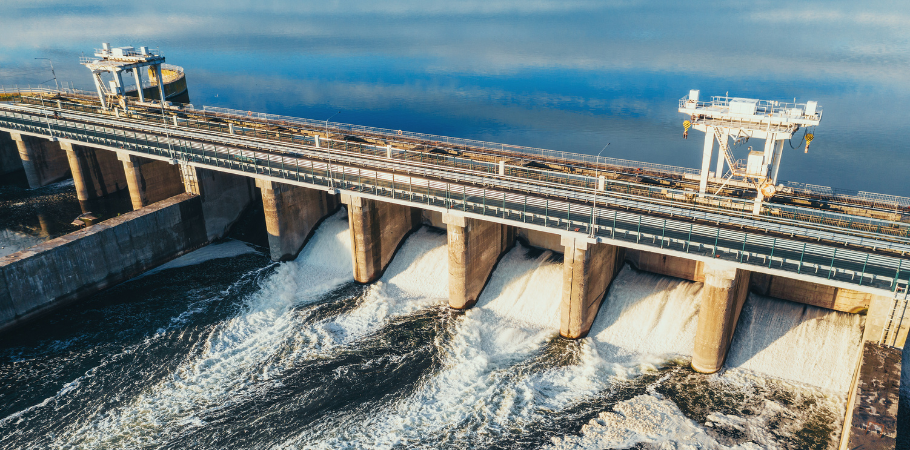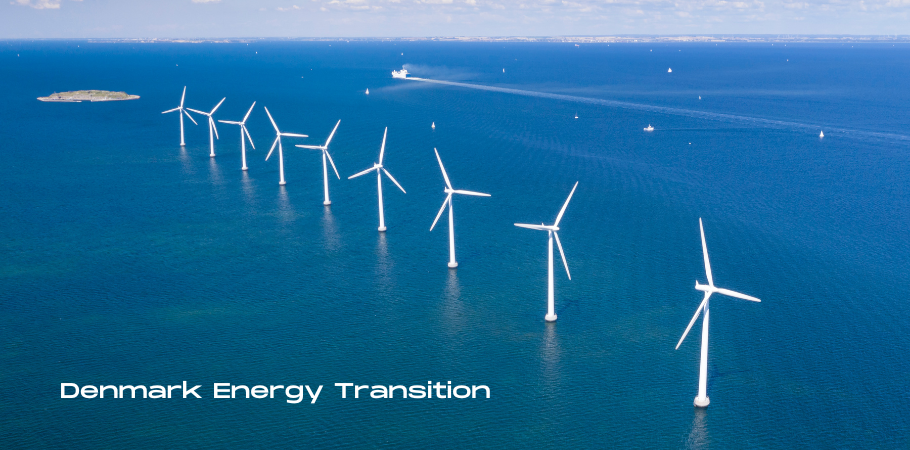
According to the Energy Transition Index, in the World Economic Forum’s (WEF) Promoting an Efficient Energy Transition 2024 report, countries have made significant progress. Let’s explore the top 5 countries leading the energy transition in this article. But first, find out what is renewable energy, and what is energy transition!
What is Renewable Energy? Some Types of Renewable Energy
Definition
Renewable energy is sustainable energy obtained from natural energy sources and can meet energy demand while reducing the impact on the global environment.
Renewable energy does not emit carbon dioxide like fossil fuels because it can directly convert the power of nature into electricity. Therefore, it becomes an indispensable energy for the realization of a decarbonized society.
Types of Renewable Energy
Here’s a closer look at some of the most common types:
1. Solar Energy
Sunlight is an abundant source of renewable energy. In addition, since it does not require fuel, it has a low environmental impact and low carbon dioxide emissions.
Sunlight is widely available and utilized in different parts of the world. Moreover, they can install solar panels on rooftops and land. And they can use it on a wide range of scales, from individual homes to large-scale power plants.
2. Wind Energy
Wind is a renewable energy source, and the movement of wind on the planet can provide sustainable electricity. It is permanent and does not require fuel, so it has a low carbon footprint.
However, wind patterns can be unpredictable, and wind turbines can have a visual impact on landscapes. They often deploy wind power as a large-scale wind farm or offshore wind farm, which can provide efficient power supply.
3. Hydropower
Hydroelectric energy is a technology that uses the flow of water to generate electricity. The main forms of hydroelectric power generation include hydroelectric power plants that use dams and tidal power generation that uses tidal power.
Hydropower can provide a steady power supply as long as the water flow is stable. It can generate electricity sustainably through the circulation of water. So it contributes to the stabilization of demand.
Hydropower plants using dams and large-scale hydrographic systems can provide a large amount of electricity. Therefore, it can meet the electricity demand of the region and the country.

4. Geothermal Energy
Geothermal energy is a technology that uses the heat of the earth to generate electricity and heat. It extracts heat from underground and uses steam or hot water to generate energy. It uses the earth’s heat source, which allows for a sustainable energy supply. Geothermal heat is not depleted, so it is sustainable for a long time.
And, geothermal energy is dependent on local geothermal resources.
5. Biomass Energy
Biomass energy is a technology that generates electricity and thermal energy by burning organic matter (plant and animal waste, crop residues, etc.).
This energy is a renewable energy source and is sustainably supplied by plant growth. In addition, by using waste and crop residues, it is possible to reduce waste disposal and make effective use of it.
See more: What is Renewable Energy? Explore Advantages & Disadvantages
What is Energy Transition?
Energy transition refers to the global energy sector’s shift from fossil-based systems of energy production and consumption — including oil, natural gas and coal — to renewable energy sources like wind and solar, as well as lithium-ion batteries.
The increasing penetration of renewable energy into the energy supply mix, the onset of electrification and improvements in energy storage are all key drivers of the energy transition.
Regulation and commitment to decarbonization has been mixed. However, the energy transition will continue to increase in importance as investors prioritize ESG factors.
Top 5 Countries Leading Renewable Energy Transition
The World Economic Forum (WEF) has published its annual global energy transition ranking. It uses the Energy Transition Index (ETI) to rank 120 countries in terms of their current operational efficiency, energy systems and transition readiness.
The ETI is based on 46 indicators including capital, current performance in sustainability, education, equity and security, human resources, infrastructure, and policies that create a transformation-ready environment.
According to the report, the global average ETI score reached a record high of 56.5 this year, up 6% since 2015.
The study states that the ten countries with the highest ETI scores account for only 1% of energy-related CO² emissions, 3% of total global energy supply, 3% of energy demand and 2% of global population.
Here is top 5 countries leading renewable energy transition in 2024:
Top 1: Sweden (ETI Score: 78,4)
Mehlum said Sweden’s leading position reflects the country’s energy efficiency, along with various policies such as the carbon pricing mechanism that the country has successfully adopted over the years.
“Sweden has undergone a very long transition journey, starting in the 1970s when the country was heavily dependent on fossil fuels, severely affected by the oil crisis in the United States. Since then, the country has really diversified its energy mix, investing heavily in nuclear and renewable energy.”
Sweden, like other Nordic countries, is also connected to the electricity markets in Northern Europe and Europe. “Through which Sweden optimizes its energy system by coordinating with different countries and enhancing energy security.”
Along with Switzerland, Sweden also leads the ranking in terms of sustainability for 2024.
Top 2: Denmark (ETI Score: 75,2)
“Denmark is a global pioneer in the wind industry, building strong foundations with companies like Vestas and Ørsted,” Mehlum detailed, “but they are also diversifying beyond the wind sector.”
“In the past, the country had more oil production and still a few, but now, the country is gradually successfully phased out and not only has become a global renewable energy powerhouse, but also has a very high proportion of renewable energy in the domestic electricity mix. Denmark has proven that it can run almost 24/7 on renewable energy.”
He added that, like Finland, Denmark benefits from the Nordic electricity market as well as the ability to connect to electricity markets in Europe.
Denmark and Switzerland are clean energy champs. Mehlum says their strong regulations speed up the switch to clean power, making them top-ranked.

Top 3: Finland (ETI Score: 74,5)
Mehlum said Finland “benefits a lot” from being part of the Nordic electricity market, which allows Nordic countries to improve their energy security.
“Recently, the country has also invested quite a bit in the nuclear sector, a controversial decision a few years ago but with very good results because it allows the country to withstand the energy crisis that we saw in Europe and around the world a few years ago. ” he said.
“Finland’s ranking reflects the country’s ability to improve energy security, have a reliable energy source and have a fairly high energy efficiency.”
The report also found that Finland ranks second, after China, in allocating the largest portion of its gross domestic product to investment in renewable energy this year.
Top 4: Switzerland (ETI Score: 73,4)
Regulation and political commitment are factors that directly drive the energy transition, and are therefore an important indicator of the ETI. According to the study, Switzerland, Luxembourg and Denmark were ranked as the highest performing countries in this category this year.
“Switzerland is located at the intersection of major European countries, bordering Germany, France, Italy and Austria. So the country’s energy system is closely linked to Europe and benefits from it,” Mehlum explained.
“It also has vast hydropower resources that allow them to have a fairly clean energy mix,” he added. “There is still some room for improvement, but the country is working on expanding solar and wind power, which is a good sign.”
Switzerland is also in the top 5 in the sustainability category, along with Albania, Costa Rica, Paraguay and Sweden.
Top 5: France (Score: 71,1)
According to the report, France entered the top 5 countries with the best performance this year thanks to effective policies on energy efficiency, which helped reduce energy intensity by 12% in 2022 compared to 2021.
“Historically, France has had a very large nuclear power capacity, which helps to ensure energy security. But in recent years, what they have done very well is energy efficiency and has taken appropriate measures to respond to the energy crisis of recent years.” Mehlum said.
“The country has developed programs on energy efficiency, specifically aimed at low-income households, that really benefit those who need it most.”
Other Important Information about Energy Transition
Emerging economies such as China and Brazil have also made significant progress. China has put into use more solar photovoltaic (PV) capacity in 2023. Brazil plans to develop hydropower and biofuels to attract investors.
According to the report, the momentum for the energy transition has slowed down. Wind and solar power are growing, but not enough. Clean energy investment lags in key areas: efficiency, electrification, and low-carbon fuels. Reaching net-zero emissions by 2050 seems unlikely.
The reason is that inflation and high interest rates have led to tighter energy markets and higher prices. Developing countries find it difficult to invest in sustainable energy solutions.
Moreover, geopolitical tensions have impacted the pace of transition in some countries. Germany. For example, increased coal production by 35% in 2022 to compensate for its reduced dependence on Russian gas.
The report also said that there are still large gaps in conversion momentum. Nearly 85% of investment in clean energy infrastructure takes place in advanced economies.
In addition, AI is also assisting governments and energy companies. According to Accenture’s research, AI initiatives can save $500 billion annually.


